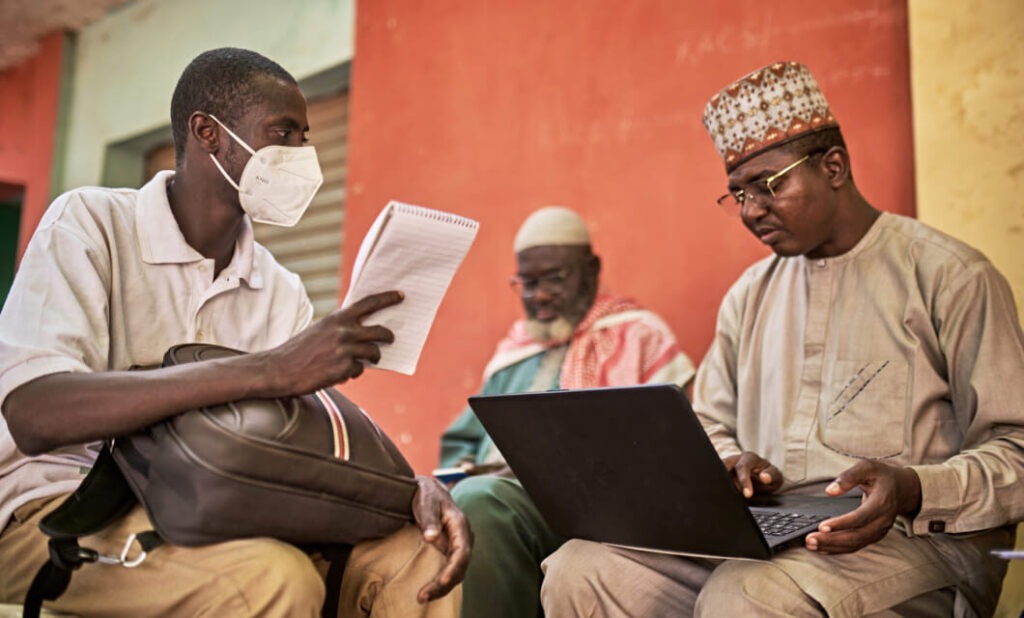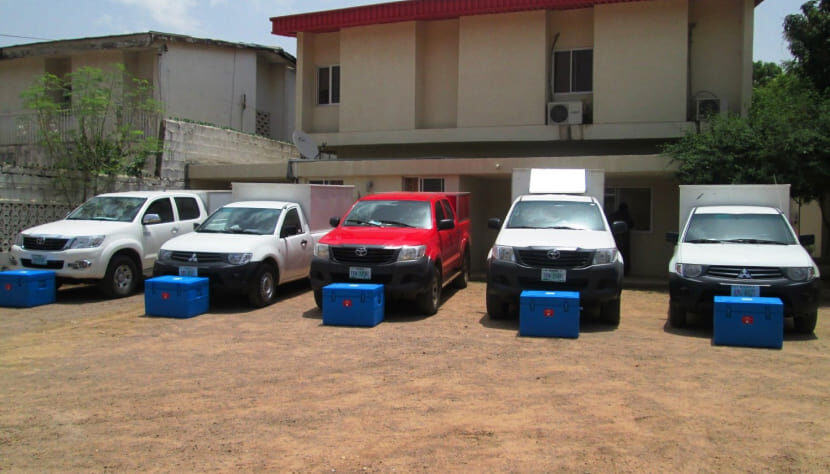How eHealth Africa Is Reinventing Public Health Systems Across Africa

When you trace the major public health milestones across Africa over the last decade, from emergency disease response to vaccine delivery, from outbreak tracking to climate-resilient health systems, a familiar name keeps appearing behind the scenes: eHealth Africa.
eHealth Africa has quietly become one of the most influential forces in digital health, building the maps, tools, systems, and emergency response infrastructure that help governments detect outbreaks faster, deliver vaccines efficiently, and strengthen public health resilience in an era defined by climate and disease.
The Silent Engine Behind Africa’s Health Progress
Founded in 2012, eHealth Africa (eHA) didn’t emerge with fanfare or headlines. Instead, the organization grew quietly but steadily, taking on the kind of work most people only hear about during a crisis. Their goal was to build the digital backbone that African health systems had long needed but often lacked.
Today, eHA works across 24 countries, leading some of the continent’s most ambitious digital health and emergency response programs. With millions of mapped settlements, thousands of trained health workers, and a suite of homegrown tools now powering disease surveillance and vaccine delivery, the organization has become one of the strongest implementation forces in Africa’s public health ecosystem.
A Journey That Started With Maps and a Mission

In the early days, eHealth Africa wasn’t building software yet. They were mapping.
The founders realized that many health interventions in Africa were flying blind; organizations could not reach every settlement because they simply didn’t know where every settlement was.
The team began creating detailed geospatial datasets using GPS and satellite imagery. What started as a technical exercise quickly became a humanitarian one. Accurate maps transformed vaccination campaigns. Outbreak teams could suddenly locate communities in remote terrain. Emergency responders could plan routes that didn’t exist on any official database. That early mapping work laid the foundation for everything eHA would build in the years ahead.
One of eHA’s earliest breakthroughs came from identifying a critical blind spot: much of (West) Africa had never been accurately mapped. Health teams often relied on incomplete or outdated settlement information, making vaccine campaigns and emergency response incredibly difficult.
eHealth Africa began conducting extensive geospatial mapping, a foundational effort that enabled proper vaccination planning, improved disease surveillance, better reach into remote communities, and data-driven decision-making. This seemingly simple step would become the bedrock for many of eHA’s future innovations.
Building Modern Emergency Operations for Africa
As outbreaks became more frequent and more complex, eHA expanded into emergency response coordination. Their establishment and support of Emergency Operations Centers (EOCs) enabled governments to obtain real-time data, support structured decision-making, and build rapid-response capacity.

These EOCs have played decisive roles in controlling Polio, Lassa fever, Yellow fever, Measles, and COVID-19. In many countries, the EOC model remains one of the strongest legacies of eHealth Africa’s collaboration with governments and global partners. As Africa’s biggest health challenges are complex, eHealth Africa is proving that the solutions must be equally interconnected.
Digital Solutions Built for Real African Realities
Beyond emergency operations, eHA has developed some of the most practical digital health tools used across the region today. These systems are designed for low-resource environments, areas with limited connectivity, and frontline health workers who need simplicity and speed.
“The future of African health systems is digital, climate-aware, and community-centered. eHealth Africa is already building that future.”
eHealth Africa’s flagship solutions include:
eIDSR – Faster Disease Surveillance
A digital reporting system that accelerates outbreak detection and strengthens national response frameworks.
LoMIS – Smarter Vaccine Supply Chains
A logistics management platform that reduces stockouts, improves forecasting, and supports cold-chain integrity.
GTS – Tracking to Improve Coverage
A real-time geographic tracking system that monitors vaccination team performance and ensures no settlement is missed.
PlanFeld & eHA GHM – Field Planning & Visualization Tools
Products that enhance planning, monitoring, and data interpretation during large-scale health interventions.
These solutions weren’t built in Silicon Valley; they were built in response to real gaps in African health programs. That practical grounding is what makes them powerful and widely adopted, and they have been deployed across dozens of districts and countries, and, more importantly, they work under real, imperfect conditions.
Logistics That Actually Deliver
One of Africa’s toughest health challenges is last-mile delivery, getting vaccines and essential commodities to the final point of care. eHA’s Vaccine Direct Delivery (VDD) model is one of the continent’s strongest responses to this challenge.

By integrating optimized routes, trained drivers, monitoring tools, and coordinated field operations, VDD has recorded remarkable on-time delivery performance in regions where consistency was previously rare. This kind of operational excellence is often overlooked, yet it directly saves lives.
Climate-Aware Public Health: The New Frontier
As climate change intensifies floods, heatwaves, and vector-borne diseases across Africa, eHealth Africa has broadened its work into climate resilience. This includes supporting:
- Renewable energy solutions for rural health facilities
- Climate Health Vulnerability Assessment Tools (CHAT)
- Flood prediction and risk-mapping
- Data systems that help governments plan for extreme weather events
Ehealth Africa’s approach reflects a growing understanding: public health cannot advance without climate resilience.
Strengthening the People Behind the Systems
Throughout its programs, eHealth Africa consistently invests in building local capacity, a core principle that defines its long-term sustainability.

They have invested heavily in capacity development:
- Training laboratory personnel
- Building local GIS expertise
- Equipping EOC staff
- Supporting government agencies with data and strategy
- Strengthening surveillance teams
This people-first strategy ensures that even as technology evolves, the skills, knowledge, and structures remain rooted within the communities they serve.
The Future of Digital Health in Africa
As Africa’s health landscape becomes more digital, more climate-sensitive, and more interconnected, organizations like eHealth Africa sit at the center of the continent’s next major transformation. The future they are building points toward real-time disease intelligence, integrated national health systems, climate-resilient infrastructures, stronger local institutions, and data-driven decision-making at every level. Quietly, consistently, eHealth Africa has become one of the most important architects of that future.
About eHealth Africa
eHealth Africa (eHA) is a non-profit organisation dedicated to strengthening health systems across Africa through the design and implementation of data-driven solutions. Over the past 15 years, eHealth Africa has developed a robust tech and operational platform specifically designed to address public health challenges. By opening its platforms for collaboration, eHA accelerates innovation adoption and impact. The organization’s work spans 24 African countries, including Chad, Liberia, Cameroon, Tanzania, Madagascar, and Zimbabwe. For more information, visit www.ehealthafrica.org.







